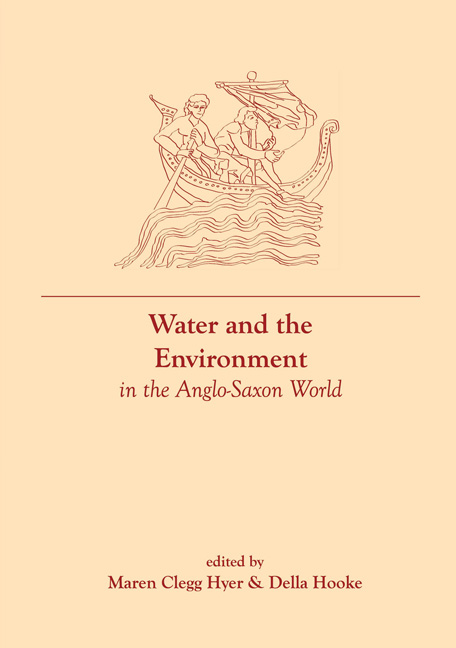Book contents
- Frontmatter
- Dedication
- Contents
- List of Illustrations
- List of Tables
- List of Contributors
- Introduction
- 1 From Whale's Road to Water under the Earth: Water in Anglo-Saxon Poetry
- 2 Water in the Landscape: Charters, Laws and Place Names
- 3 Fens and Frontiers
- 4 Marshlands and Other Wetlands
- 5 Rivers, Wells and Springs in Anglo-Saxon England: Water in Sacred and Mystical Contexts
- 6 Food from the Water: Fishing
- 7 Inland Waterways and Coastal Transport: Landing Places, Canals and Bridges
- 8 Watermills and Waterwheels
- 9 Water, Wics and Burhs
- Notes
- Suggested Reading
- Index
5 - Rivers, Wells and Springs in Anglo-Saxon England: Water in Sacred and Mystical Contexts
- Frontmatter
- Dedication
- Contents
- List of Illustrations
- List of Tables
- List of Contributors
- Introduction
- 1 From Whale's Road to Water under the Earth: Water in Anglo-Saxon Poetry
- 2 Water in the Landscape: Charters, Laws and Place Names
- 3 Fens and Frontiers
- 4 Marshlands and Other Wetlands
- 5 Rivers, Wells and Springs in Anglo-Saxon England: Water in Sacred and Mystical Contexts
- 6 Food from the Water: Fishing
- 7 Inland Waterways and Coastal Transport: Landing Places, Canals and Bridges
- 8 Watermills and Waterwheels
- 9 Water, Wics and Burhs
- Notes
- Suggested Reading
- Index
Summary
… fram mænanlea on horsweg of horswege innan gatanstige þanon innon denebroc of denebroc innon tilnoþ ælong tilnoþes to halgan wyllan of þære wyllan in hreodcumb …
… from the common wood to the horse way; from the horse way into the goat path; thence into valley brook, from valley brook into Tilnoth; along Tilnoth to the holy well; from the well to reed coomb … (Bounds of Withington, Gloucestershire)
Introduction
As an indispensable necessity for human life, water played a major role in most early religious beliefs. But water can also be regarded as ‘other’: ‘it can refresh or it can kill … it possesses life, yet is not itself alive … Water further comes from below, from darkness, from the place where the dead (in cultures for which that is relevant) are buried, from the brooding presence beneath the feet’. It could therefore be ‘both a creator and destroyer of life’. It was believed in many cultures across the world that bodies of water in the form of wells, lakes and pits might provide access to another world below that of man, a world inhabited by both spirits and the ancestors. On the edge of the everyday world, liminal areas on the fringe of human occupation, wetlands evidently held a special meaning, too, for many early British societies. For some, these were places to venerate divinity ‘through the forces of nature, focusing upon the borderline territories between this world and the next – which were to become known in Christian spirituality as “thin places”, where eternity and unity with the Spirit can best be glimpsed from this earthly dimension’. The sacrifice of precious objects in wetlands and rivers was part of an extensive water cult found throughout northern Europe in prehistory. Votive offerings resulting from such beliefs are first manifest in Britain as early as the Mesolithic period. They reached a height in the Late Bronze and Iron Ages but continued even after the adoption of Christianity (see below).
- Type
- Chapter
- Information
- Water and the Environment in the Anglo-Saxon World , pp. 107 - 135Publisher: Liverpool University PressPrint publication year: 2017



